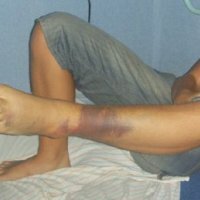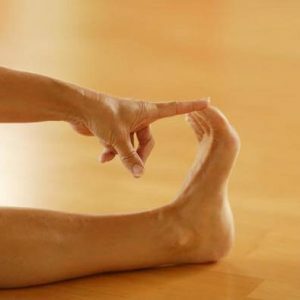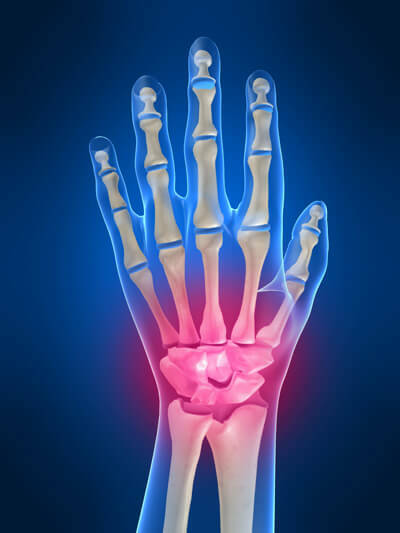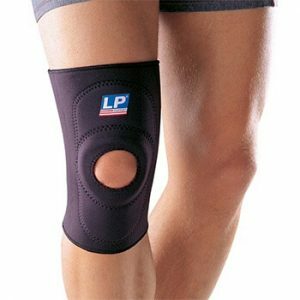Rupture of ankle ligament

Damage to the ankle ligaments, which is associated with partial or complete rupture of the tendon fibers, is a rupture of the ankle ligament. As a rule, there are three groups of ligaments involved in fixing the foot and lower leg in the joint. It is internal( medial), external( lateral) and interosseous group of ligaments. In most cases, the elements of the external group are damaged, this is when there is a pivoting of the foot inward, as well as its flexion in the direction of the sole. Of the total number of lesions in the ankle, ligament ruptures are approximately 10%.
What are the types of ankle ligament rupture?
It is from the number of broken fibers that the following types of ligament rupture are distinguished. Damage of the first degree is a "stretching" of the ligament, when only a small percentage of all fibers are broken. Damage of the second degree is a partial ligament rupture, when a significant part of the fibers is damaged, but the ligament function does not suffer at the same time. Damage of the third degree is a hollow ligament rupture or its detachment from the attachment site.
reasons torn ligaments ankle
The causes of this disease are falling from the height, exposing foot at unsuccessful falling, playing certain sports, the bounce( accident), injury, etc.
Symptoms torn ligaments
ankle Typically, ligament rupture symptoms. This joint depends on the degree of damage. The signs of this trauma may be as follows. This is a painful feeling, especially when walking;Swelling of the ankle( on the outside), on the foot;Soreness of the ankle region during palpation;Bruising, bruising in the joint area. There is also a feeling of instability in the joint, stiffness of the joint, in some cases, the inability to keep up.
These symptoms vary in intensity, this depends on the severity of the ankle ligament rupture. People who previously had a rupture of these ligaments can even swell the joint and have no pain. Such patients instead of these symptoms can feel instability in the ankle, especially when walking. However, even with minor symptoms, diagnosis and treatment are simply necessary to prevent negative consequences.
Diagnostics
ligament rupture during evaluation trauma surgeon received ankle injury in detail asks the patient about the mechanism of injury, carefully analyzes all the symptoms, examines the damaged leg. To determine the degree of discontinuity ankle ligaments applied X-ray examination, in some cases using computed tomography or magnetic resonance tomography, for more accurate diagnosis.
ligament rupture Treatment
ankle ligament tear ankle treatment is considered to be a responsible and important activity, because the effects of( long-term) with insufficient or incorrect treatment can disturb the person through the months and even years after travmy. Ot strength of internal damage, the magnitude of the gap depends on the ankle ligamentsApproach to treatment. In the event that a complete rupture of ligaments has occurred in the trauma and blood has formed in the joint cavity, it is most likely that surgery can not be dispensed with. Surgical intervention is necessary for: open trauma with a rupture of ligaments of the ankle;Complete rupture of ligaments;Severe hemorrhage into the periarticular tissues.
operation must be carried out after about 5 weeks after the injury, since the surgery in the early stages may provoke the development of contractures. But in all cases, surgical intervention for long periods result in a delay may not only worsening the patient's condition and even long-term complications usually after the alleged recovery, up to a change of gait. Surgical treatment
torn ligaments is typically in the stitching of the damaged ligament or ligament end in suturing to bone, as well as revision joint cavity resection( otherwise removing) of damaged tissues.
In the most mild cases, with a lower intensity of subjective and objective symptoms that accompany the rupture of ligaments of the joint, treatment is conducted in a conservative way.



